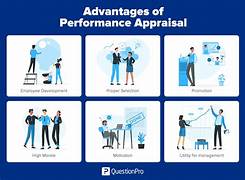Pros and Cons of Evaluating Employee Performance in an Organization
Introduction
Employee performance evaluation is a crucial aspect of human resource management that helps organizations assess productivity, identify areas for improvement, and reward high performers. While performance evaluations can enhance employee motivation and drive business growth, they can also create stress, lead to bias, and be time-consuming. This article explores the advantages and disadvantages of evaluating employee performance in an organization and how to strike a balance for effective workforce management.
Pros of Evaluating Employee Performance
1. Enhances Productivity and Efficiency
Regular performance evaluations help employees understand their strengths and areas needing improvement, leading to enhanced productivity. Constructive feedback enables workers to align their efforts with company objectives, ensuring a more efficient workforce.
2. Identifies Strengths and Weaknesses
Through performance appraisals, managers can assess the skills and competencies of employees. This insight helps in making informed decisions about training programs, promotions, and workload distribution, ultimately optimizing workforce utilization.
3. Encourages Employee Development and Growth
Evaluations provide a structured approach to career development by setting clear expectations and goals. Employees who receive regular feedback are more likely to seek professional growth opportunities, whether through skill enhancement or additional responsibilities.
4. Facilitates Reward and Recognition Programs
Organizations use performance reviews to identify top performers and reward them accordingly. Incentives such as promotions, bonuses, and recognition motivate employees to maintain high standards of work.
5. Helps in Decision-Making for Promotions and Salary Increments
Employee performance evaluations play a crucial role in determining promotions and salary increases. Managers can use objective data to make fair and transparent decisions, reducing favoritism and workplace conflicts.
6. Provides Legal Protection
Properly documented performance evaluations can serve as evidence in case of legal disputes related to wrongful termination, discrimination, or employee grievances. This ensures that organizations follow fair employment practices.
7. Improves Communication and Engagement
Regular performance discussions create opportunities for open dialogue between employees and management. This improves workplace relationships, fosters engagement, and ensures employees feel valued and heard.
Cons of Evaluating Employee Performance
1. Subjectivity and Bias
Despite best efforts, performance evaluations can be influenced by personal biases, favoritism, or inaccurate perceptions. Subjective assessments may lead to unfair treatment, causing dissatisfaction among employees.
2. Stress and Anxiety Among Employees
Performance evaluations can create pressure and anxiety for employees, especially if feedback is overly critical. Employees may feel insecure about their job stability, leading to decreased morale and productivity.
3. Time-Consuming Process
Evaluating employee performance requires considerable time and effort from managers and HR professionals. Preparing reports, conducting meetings, and providing feedback can divert attention from daily operations, affecting overall efficiency.
4. Resistance to Feedback
Not all employees respond positively to constructive criticism. Some may feel demotivated, defensive, or resistant to change, making it difficult for organizations to implement improvement strategies effectively.
5. Potential for Office Politics
In some organizations, performance evaluations can become a tool for favoritism, politics, or manipulation. Employees may feel pressured to conform to workplace dynamics rather than focus on genuine performance improvement.
6. One-Time Assessment vs. Continuous Improvement
Annual or periodic performance reviews may not accurately reflect an employee’s overall contribution. A one-time evaluation may overlook consistent efforts throughout the year, leading to an incomplete assessment.
7. Cost of Implementing Performance Review Systems
Organizations must invest in performance management tools, training, and HR resources to conduct effective evaluations. For small businesses, these costs can be a significant burden, making the process financially challenging.
Striking a Balance: Best Practices for Effective Performance Evaluation
To maximize the benefits and minimize the drawbacks of employee performance evaluations, organizations should consider the following best practices:
- Use Multiple Evaluation Methods – Combining self-assessments, peer reviews, and manager evaluations ensures a well-rounded assessment of employee performance.
- Provide Continuous Feedback – Instead of annual reviews, implement regular check-ins and feedback sessions to foster growth and improvement.
- Set Clear and Measurable Goals – Employees should have clear performance expectations and goals aligned with organizational objectives.
- Train Managers on Fair Evaluation Practices – Ensuring managers are trained in objective assessment techniques reduces bias and improves fairness.
- Encourage Open Communication – Creating a transparent and supportive environment encourages employees to accept feedback constructively.
- Recognize and Reward Achievements – Celebrating accomplishments, even small wins, boosts morale and motivates employees to perform better.
Conclusion
Evaluating employee performance is a fundamental process in organizational success. While it offers numerous benefits such as improved productivity, career growth opportunities, and informed decision-making, it also comes with challenges like bias, stress, and administrative burdens. By implementing fair, transparent, and continuous performance evaluation methods, organizations can ensure a balanced approach that benefits both employees and employers.


